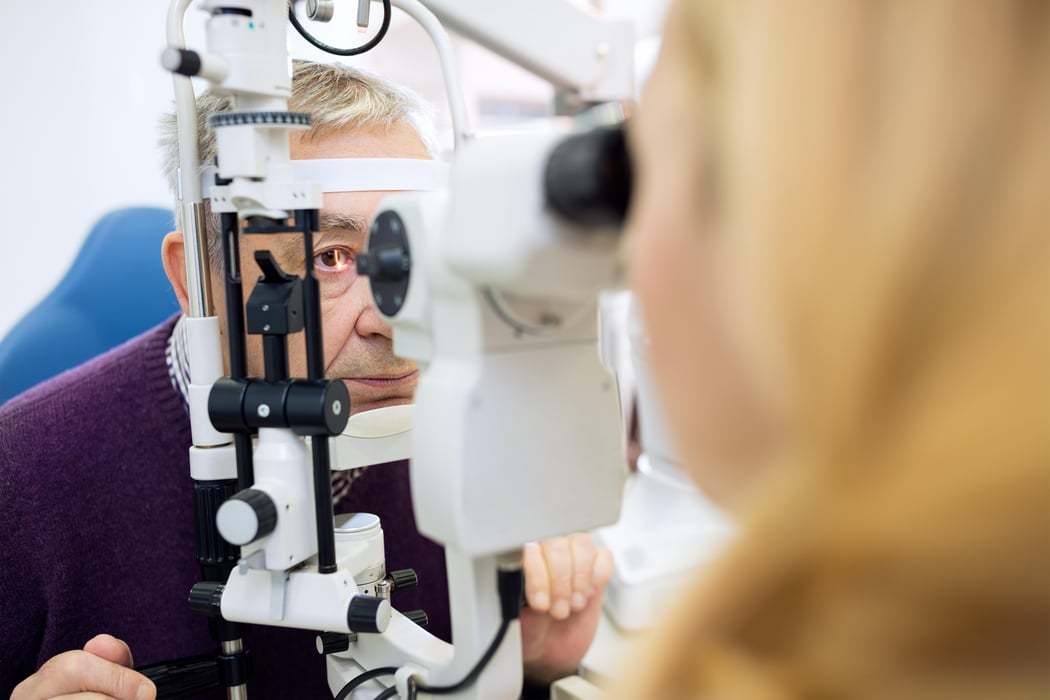Eye Scans Could Spot Parkinson’s in Earliest Stages

TUESDAY, Aug. 22, 2023 (HealthDay News) -- British researchers may have found a way to diagnose Parkinson’s disease several years sooner.
Researchers at University College London and Moorfields Eye Hospital say that eye scans may be able to detect signs of Parkinson’s up to seven years before diagnosis.
“I continue to be amazed by what we can discover through eye scans. While we are not yet ready to predict whether an individual will develop Parkinson’s, we hope that this method could soon become a pre-screening tool for people at risk of disease," said lead author Dr. Siegfried Wagner, of the UCL Institute of Ophthalmology and Moorfields Eye Hospital.
“Finding signs of a number of diseases before symptoms emerge means that, in the future, people could have the time to make lifestyle changes to prevent some conditions arising, and clinicians could delay the onset and impact of life-changing neurodegenerative disorders," Wagner said in a university news release.
Artificial intelligence (AI) was used in the analysis of the AlzEye dataset and the wider U.K. Biobank. AlzEye is believed to be the world's largest single-institution retinal imaging information database.
Even though Parkinson’s has a relatively low prevalence in the population -- about 0.1% to 0.2% -- these data sets helped identify these subtle markers.
Eye scan data -- a field called “oculomics” -- have previously revealed signs of other neurodegenerative conditions, including Alzheimer’s, multiple sclerosis and schizophrenia, as well as risk of high blood pressure; heart disease, including strokes, and diabetes.
“This work demonstrates the potential for eye data, harnessed by the technology to pick up signs and changes too subtle for humans to see. We can now detect very early signs of Parkinson’s, opening up new possibilities for treatment,” Alastair Denniston, consultant ophthalmologist at University Hospitals Birmingham, said in the release.
High-resolution images of the retina are now a routine part of eye care, including a type of 3D scan known as optical coherence tomography, or OCT.
An OCT scan can quickly produce a cross-section of the retina in detail down to a thousandth of a millimeter.
A retina scan is the only non-intrusive way to view layers of cells below the skin’s surface, according to the study. Using a type of AI known as machine learning, computers can quickly analyze large numbers of OCTs and other eye images for research.
“Increasing imaging across a wider population will have a huge impact on public health in the future, and will eventually lead to predictive analysis,” said Dr. Louisa Wickham, Moorfields’ medical director. "OCT scans are more scalable, non-invasive, lower cost and quicker than brain scans for this purpose."
The findings were published Aug. 21 in Neurology, journal of the American Academy of Neurology.
More information
The National Institute on Aging has more on Parkinson’s disease.
SOURCE: University College London, news release, Aug. 21, 2023
Related Posts
In Breakthrough Transplant, Man Receives Genetically Modified Pig Heart
TUESDAY, Jan. 11, 2022 (HealthDay News) -- In a medical first, doctors from the...
Pregnancy Seems to Ease MS Symptoms, and Research May Show Why
THURSDAY, June 15, 2023 (HealthDay News) -- Women with multiple sclerosis...
Muchos dentistas siguen dando a sus pacientes analgésicos opioides adictivos
JUEVES, 21 de octubre de 2021 (HealthDay News) -- Aunque la mayoría de los...
Could Herpes Viruses Help Drive Type 2 Diabetes?
TUESDAY, May 17, 2022 (HealthDay News) -- Certain common viruses, including the...
